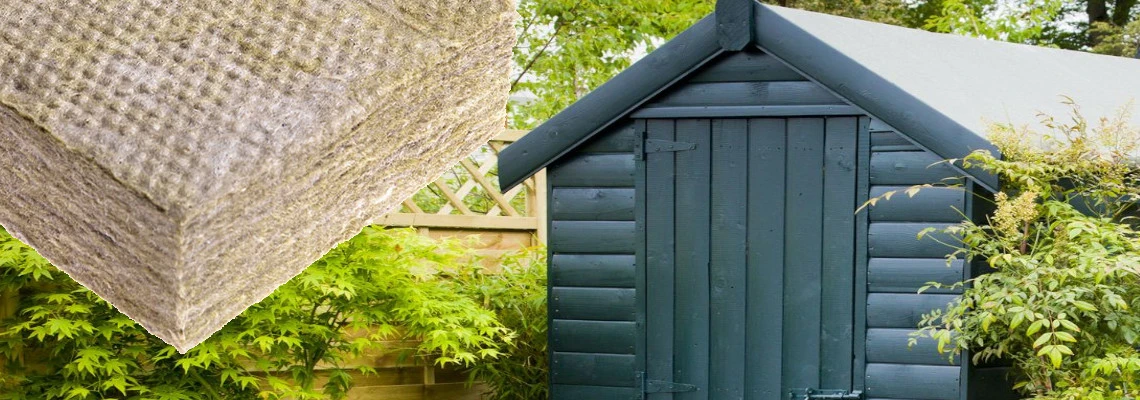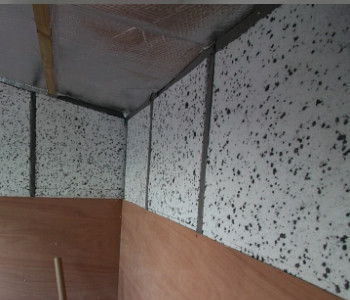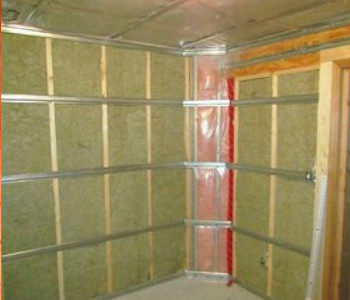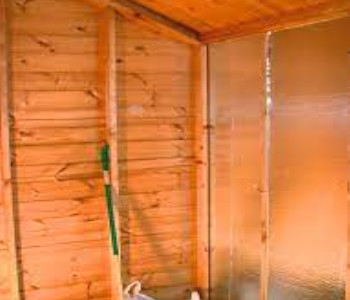
Is it worth insulating a shed?*
Have you ever been working in a place where it feels like freezing cold?
If you spend a good portion of your time in shed durring winter it would be the same. Non-insulated sheds can vary wildly in temperature throughout the year – from extremely cold in winter to excessive heat and humidity in summer. Insulating your shed is a recommended step. There are tons of benefits in insulating your shed. By regulating your shed’s temperature, it becomes much easier to enjoy all year round and even opens it up to a whole range of new possibilities. Such as transforming it into a gym or workshop where you can “escape” from everything. You can keep good wines there – or just sit and read a book. Moreover, an insulated shed might also prove a better environment for the items you store inside it. It can also make it more versatile, allowing you to store plants.
What are the benefits of insulating shed?
Today, the construction is different, we pay a lot of attention to insulation. Good insulation will keep your shed warm in winter, ensuring there is no moisture and no mold. Insulating your shed, particularly ensuring its longevity and making it a pleasant space. Why? Insulation simply slows the flow of heat from inside to outside, or outside to inside.
Insulating your shed can:
- Prevent mould, damp and moisture build up.
- Absorb and retain noise.
- Provide additional protection for valuable equipment such as tools, machinery and technology.
What can I use to insulate a shed?
There are many different materials that can be used to insulate garden sheds. Hovewer, in our quick guide below we’ll be weighing up 3 types of insulation for your shed.
- Polystyrene
There are budget friendly insulation materials such as White or Grey Polystyrene. Both are reliable and affordable in insulating your shed.They are most commonly used and probably the cheapest insulation material.

- Mineral woll
Mineral Wool insulation provides an outstanding level of temperature and humidity control, as well as noise insulation. It is an efficient insulator but can cause you harm without proper safety equipment.

- PIR – Rigid Insulation Board
One of the most common types of insulation in use today, PIR insulation boards are available in a wide range of sizes, thicknesses, and specialisations.
Insulation boards are versatile and easy to cut-to-size to fit your needs. If there’s one word you want to bear in mind when insulating a shed, it’s Xtartherm or Celotex brand. This type of insulation board comes in with foil backs that insulate the building.
Boards have a better insulating value per thickness than most other materials.

How to insuate a shed?
Most garden sheds in Britain are constructed using stripped back internal timber walls with exposed joists and frames. These make it super simple for the handy homeowner to insulate their shed.
All you need to do is to add insulation in the walls and the ceiling. Insulating your shed is quite easy and can be done in a day or two. If you hire a manufacturer or supplier to do it for you it’ll be a half day.
The insulation slab can be pushed in to fit the width of the joists. With very little effort, you don’t need to secure them so it’s an easy one-person task. Before doing this though you must consider installing a breather membrane for ventilation. It’s much easier to run wires, pipes and ductwork before the insulation is in and the walls closed up.
As with any DIY project, always consult the manufacturer’s guidelines before beginning. These will help to confirm the steps needed to install any insulation or other products, and ensure they work properly.
How to insulate shed floor?
Floor insulation is a very important item in making your shed. Insulating your floor isn’t going to be easy if your shed is already assembled – normally the insulation sits between the floor joists.To insulate a shed floor you can lay a thin layer of insulation board and top it off with OSB or plywood to stabilise the floor surface and protect the insulation.
Why insulated a shed?
Well, if you’re looking to maximise the functionality of your wooden building, and also want to ensure the interior and exterior of your shed continue to look great year-after-year, then we strongly recommend investing in insulation. Today, sheds have a wider purpose in many things – and that is why they are made much better. Therefore, the need for insulation of this building has become inevitable.
*All the information provided in the content published on Insulationgo blog is for informational and educational purposes only. Insulationgo LTD makes every effort to ensure the accuracy and timeliness of the content, but we do not assume any responsibility for any errors or omissions.
The information presented on this blog should not be considered as professional advice or a substitute for consulting relevant experts. Before making any purchase decisions or taking action based on the information presented here, it is strongly recommended to contact the product manufacturer directly to verify the details and ensure its suitability for your specific needs.
By using this blog, you acknowledge and agree that Insulationgo LTD shall not be held liable for any damages, losses, or inconveniences arising from the use or reliance on the information provided herein. This limitation of liability applies to all users of the blog, including but not limited to visitors, readers, and subscribers.










































































































